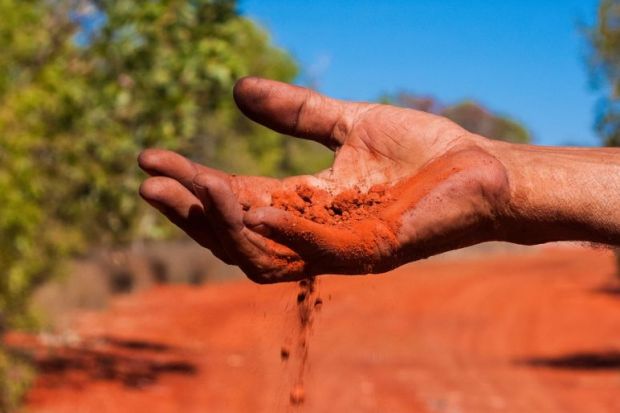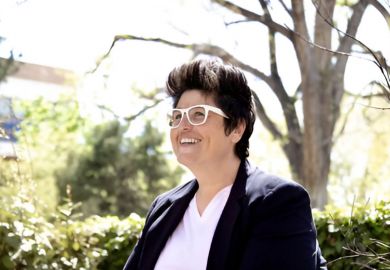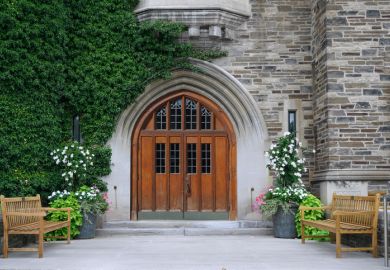The past 12 months have been a roller coaster for anyone working in Indigenous higher education in Australia.
In August 2023, cautious optimism surrounded the Universities Accord, whose panel had just published its interim report. That document’s focus on equity and lifting participation among Indigenous Australians inspired quiet hope. The interim report placed “First Nations at the heart of Australian higher education”, and federal education minister Jason Clare spoke of doubling the number of Indigenous students attending universities in the next 10 years and guaranteeing culturally appropriate support for all Indigenous students.
Subsequent Accord panel reports included significant recommendations, ranging from dedicated PhD scholarships and postdoctoral fellowships for First Nations researchers to the establishment of a First Nations Council to advise both ministers and the proposed new Australian Tertiary Education Commission on a self-determined approach to Indigenous higher education matters. Finally, it seemed that Indigenous higher education was being given the long overdue attention it deserved.
Meanwhile, at the institutional level, positive developments continued, with a growing number of Australian universities prioritising Indigenous higher education. All Australian universities now have an Indigenous strategy or Reconciliation Action Plan. At the executive level, nearly every Australian university has established a dedicated leadership role focused on Indigenous matters.
These efforts are beginning to reap rewards, with many institutions recording significant improvements in Indigenous student enrolment and success. Nationally, Indigenous student enrolments more than doubled between 2008 and 2021. Indigenous graduates have strong employment outcomes and Indigenous enrolments in postgraduate research have more than doubled since 2005. Most Australian universities have an Indigenous workforce strategy in place, with a focus on growing the Indigenous academic pipeline. Indigenous higher education is finally on an upward trajectory, the result of Indigenous leaders who have spent decades tirelessly pushing for change.
There is strong evidence to suggest that all students are benefiting from the increased focus on Indigenous higher education. This includes international students seeking opportunities to learn about Australia’s Indigenous cultures, which many cite as integral to a distinctively Australian education. Australia’s Indigenous research, across all academic disciplines, is world-leading. Much of this work is Indigenous-led or co-designed to benefit Indigenous people, delivering broad social, cultural and economic benefits.
Yet, despite all the impactful work being done at the institutional level, coupled with the Accord’s commitment to centring First Nations higher education, the future of Indigenous higher education feels precarious.
The government responded to the Accord Final Report via its May budget, addressing only 29 of the 47 recommendations in full or in part. There has been no mention of many of the recommendations related to Indigenous higher education in either the budget or post-budget papers. Concern is mounting that Indigenous higher education will be put on the back burner, with many of the laudable initiatives kicked down the road or abandoned entirely.
Adding to anxiety about the future of Indigenous higher education is the proposed introduction of caps on universities’ international student enrolments. Fewer international students will make our classrooms less diverse, diminishing the educational experiences of all students – domestic and international, Indigenous and non-Indigenous. At a time when social cohesion is under enormous strain, our universities provide exposure to other cultures, perspectives and knowledge systems, which promotes and cultivates tolerance and understanding.
In addition, universities use the revenue from international student fees to invest in a wide range of initiatives that enhance the educational experience of all students. The proposed caps will result in universities having reduced capacity to fund programmes and initiatives that strengthen and enhance the higher education experiences of Indigenous Australians and other underrepresented groups that are supposedly central to the Accord’s ambitions.
At the University of Melbourne, the initiatives outlined in Murmuk Djerring, our Indigenous strategy, could be at risk. Murmuk Djerring commits to a major investment in recruiting and retaining Indigenous students and staff. It promises a range of initiatives, including a multi-year, university-wide Indigenous cultural education programme for all staff and long-standing, place-based partnerships aimed at addressing serious educational disadvantage.
The introduction of caps on international students, coupled with inaction on implementing key Accord recommendations, risks reversing the hard-won gains in Indigenous higher education and setting back decades of progress. There is now deep concern that the Accord could end up joining a long list of unfulfilled promises to First Nations people.
Barry Judd is deputy vice-chancellor, Indigenous at the University of Melbourne.
Register to continue
Why register?
- Registration is free and only takes a moment
- Once registered, you can read 3 articles a month
- Sign up for our newsletter
Subscribe
Or subscribe for unlimited access to:
- Unlimited access to news, views, insights & reviews
- Digital editions
- Digital access to THE’s university and college rankings analysis
Already registered or a current subscriber?








